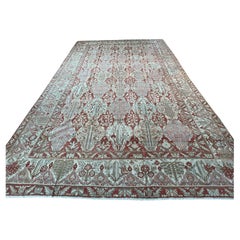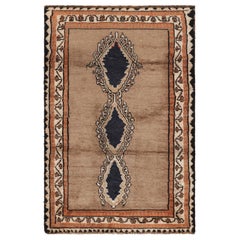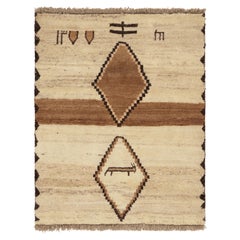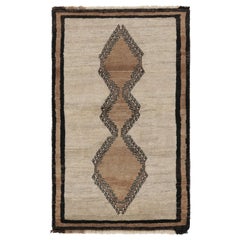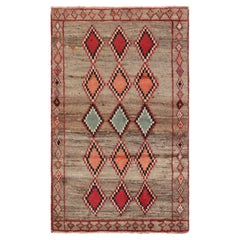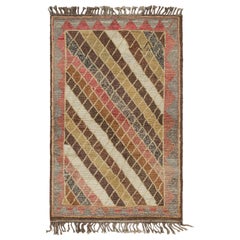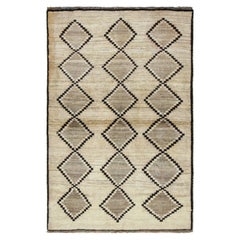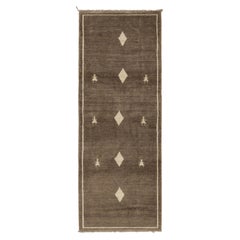Diamond Persian Rug
Vintage 1950s Persian Persian Rugs
Wool
Vintage 1950s Persian Persian Rugs
Wool
Vintage 1950s Persian Persian Rugs
Wool
Vintage 1950s Persian Tribal Persian Rugs
Wool
Vintage 1950s Persian Tribal Persian Rugs
Wool
Vintage 1950s Persian Tribal Persian Rugs
Wool
Vintage 1950s Persian Tribal Persian Rugs
Wool
Vintage 1950s Persian Tribal Persian Rugs
Wool
Vintage 1950s Persian Persian Rugs
Wool
Vintage 1950s Persian Tribal Persian Rugs
Wool
Antique Early 1900s Persian Persian Rugs
Wool
Vintage 1920s Persian Tabriz Persian Rugs
Wool
Vintage 1950s Persian Persian Rugs
Wool
Antique Early 1900s Persian Malayer Persian Rugs
Wool
Vintage 1950s Persian Tribal Persian Rugs
Wool
Mid-20th Century Persian Sultanabad Persian Rugs
Wool
Vintage 1930s Persian Malayer Persian Rugs
Wool
Vintage 1950s Persian Tribal Persian Rugs
Wool
Antique Early 1900s Persian Malayer Persian Rugs
Wool
Vintage 1950s Persian Persian Rugs
Wool
Early 20th Century Persian Tribal Persian Rugs
Wool
Antique 1890s Persian Tribal Persian Rugs
Wool
20th Century Persian Other Persian Rugs
Wool
Antique Early 1900s Persian Tribal Persian Rugs
Wool
20th Century Persian Malayer Persian Rugs
Wool
Vintage 1920s Persian Kilim Persian Rugs
Wool
Vintage 1950s Persian Persian Rugs
Wool
Early 20th Century Persian Malayer Persian Rugs
Wool
Vintage 1940s Persian Tribal Persian Rugs
Wool
Early 20th Century Persian Tribal Persian Rugs
Wool
Early 20th Century Persian Tribal Persian Rugs
Wool
Vintage 1950s Persian Tribal Persian Rugs
Wool
Mid-20th Century Persian Sultanabad Persian Rugs
Wool
Vintage 1920s Afghan Persian Rugs
Wool
Vintage 1950s Persian Tribal Persian Rugs
Wool
Vintage 1950s Persian Tribal Persian Rugs
Wool
Vintage 1950s Persian Tribal Persian Rugs
Wool
Early 20th Century Persian Sultanabad Persian Rugs
Wool
Vintage 1950s Persian Tribal Persian Rugs
Wool
Vintage 1950s Persian Tribal Persian Rugs
Wool
Vintage 1950s Persian Tribal Persian Rugs
Wool
Vintage 1950s Persian Tribal Persian Rugs
Wool
Vintage 1950s Persian Tribal Persian Rugs
Wool
20th Century Persian Other Persian Rugs
Wool
Antique 1860s Persian Malayer Persian Rugs
Wool
Antique 19th Century Persian Tribal Persian Rugs
Wool
Early 20th Century Persian Tribal Persian Rugs
Wool
2010s Persian Tribal Persian Rugs
Wool
Early 20th Century Persian Tabriz Persian Rugs
Wool
Early 20th Century Persian Tribal Persian Rugs
Wool
Vintage 1950s Persian Tribal Persian Rugs
Wool
Early 20th Century Persian Kashan Persian Rugs
Wool
Vintage 1950s Persian Tribal Persian Rugs
Wool
Early 20th Century Persian Tribal Persian Rugs
Wool
Vintage 1920s Persian Persian Rugs
Wool
Mid-20th Century Persian Mid-Century Modern Persian Rugs
Wool
Vintage 1950s Persian Tribal Persian Rugs
Wool
Mid-20th Century Persian Mid-Century Modern Persian Rugs
Wool
- 1
Diamond Persian Rug For Sale on 1stDibs
How Much is a Diamond Persian Rug?
Finding the Right Persian-rugs for You
Make a bold statement in a living room or bedroom by incorporating vintage Persian rugs in your home decor.
A Persian carpet lends an aura of prestige to any room, even today. The fascination with Persian rugs dates at least as far back as the 4th century B.C., when historian Xenophon referred to the “soft rugs on which the Persians sit.” For centuries, Iran (modern-day Persia) has been known for the craftsmanship, intricate patterns and artistry of its carpets, which have found their way into households and museums around the world.
Although they have many imitators, real Persian rugs are made only in Iran and are easily recognized by their vibrant colors and elegant patterns.
Traditional, or antique, Persian rugs are what most people identify as “authentic.” Hand-made, they are very durable and, if properly cared for, can be passed down from generation to generation. Modern Persians, on the other hand, are often machine-made. Today’s carpets, Iranian or otherwise, can’t possibly match the level of craftsmanship that prevailed centuries ago, so historical Persian carpets will always be admired and highly valued.
Although the machine-aided production process is much faster and cheaper, the resulting rugs typically do not have the same quality or lifespan as handwoven ones, so traditional options are considered better investments.
To distinguish between the two, look for imperfections. Because traditional Persian rugs are handwoven, you will likely see small flaws on the front and back. With a machine-made imitation, on the other hand, you will probably not find stitching glitches, and the back will have a mesh or plastic covering.
Antique rugs are handmade from the finest materials, including wool, silk or cotton — never synthetic fibers. The fibers used in antique rugs are colored using natural dyes derived from insects and plants and woven into bold designs that reflect Iran’s culture and history. Since Persian tribes traditionally raised and herded sheep, wool was the most common material. The fiber has many advantages: It is fire-resistant and dries much more quickly than cotton. Also, because of its natural elasticity, it is more durable than cotton or silk. Regarded as works of art, Persian rugs can take months or years to complete.
The different types of Persian rugs are named for the cities, villages and regions where they’re made. Kashan rugs, for example, woven in the north-central Iranian city of Kashan, are considered among the finest city rugs, distinguished by curvilinear motifs like palmettos, leaves and arabesques. Nains have high knot counts, an indication of high quality, and generally employ pink, blue and ivory hues, while Tabriz rugs — created by weavers in the northwestern Iranian city of Tabrīz (or Tabriz) — mostly have floral and garden patterns.
When shopping for vintage Persian rugs, you'll want to consider color, size and more — for a history of these rugs and tips on how to style yours, visit our guide to these woven creations today.
Find Tabriz rugs, handmade silk Persian rugs, Persian tribal rugs and other antique and vintage rugs from the world's best furniture dealers on 1stDibs.
- 1stDibs ExpertApril 3, 2024Persian rugs can be expensive because they are made with the highest quality materials, the cost of which trickles down to the consumer, and because of the long time that it takes to create these majestic works.
Antique and vintage Persian rugs are handmade from the finest materials, including wool and silk. These fibers are colored using natural dyes derived from insects and plants and woven into bold designs that reflect Iran’s culture and history. Regarded as works of art, carpets and rugs of this kind can take months or years to complete.
Iran (modern-day Persia) encompasses different cultures, languages and dialects, and its exquisite rugs reflect this diversity. The fascination with Persian rugs dates at least as far back as the 4th century B.C., when historian Xenophon referred to the “soft rugs on which the Persians sit.” For centuries, Iran has been known for the craftsmanship, intricate patterns and artistry of its carpets, which have found their way into households and museums around the world.
The antique and vintage Persian rugs for sale on 1stDibs include Persian tribal rugs, handmade silk Persian rugs and more. - What is a Persian Heriz rug?1 Answer
 NazmiyalMarch 23, 2021A rug that was woven in the Heriz area in Iran.
NazmiyalMarch 23, 2021A rug that was woven in the Heriz area in Iran. - What is an Overdyed Persian rug?1 Answer1stDibs ExpertOctober 12, 2021An overdyed Persian rug refers to a rug that has been treated with a specific process and wash — it involves bleaching, color saturation and drying. The washed rug is overdyed, which creates deep and rich color that is uneven compared to that of a new rug. This will give it a vintage appearance and it is guaranteed to stand out in any space. Find a collection of antique and vintage rugs on 1stDibs today.
- Do Persian rugs fade?1 Answer1stDibs ExpertAugust 15, 2019
Yes, Persian rugs will fade as a result of prolonged sun exposure.
- What is a vintage Persian rug?1 Answer1stDibs ExpertOctober 12, 2021A vintage Persian rug is often a hand-knotted or hand-woven rug that dates from the 1940s to the 1980s. True Persian rugs can only be produced in Iran's middle eastern area. A soft backing is usually included in a genuine Persian rug. Find a wide collection of vintage Persian rugs in various materials on 1stDibs today.
- What are Persian rugs made of?1 Answer1stDibs ExpertApril 3, 2024Persian rugs are made of the finest materials, including wool, cotton and silk. Authentic Persian rugs are never made with synthetic fibers. Since Persian tribes traditionally raised and herded sheep, wool was the most common material. The fiber has many advantages: It is fire-resistant and dries much more quickly than cotton. Also, because of its natural elasticity, it is more durable than cotton or silk.
Regarded as works of art, carpets and rugs of this kind are made by hand and can take months or years to complete.
Iran (modern-day Persia) encompasses different cultures, languages and dialects, and its exquisite rugs reflect this diversity. The fascination with Persian rugs dates at least as far back as the 4th century B.C., when historian Xenophon referred to the “soft rugs on which the Persians sit.”
The antique and vintage Persian rugs for sale on 1stDibs include Persian tribal rugs, handmade silk Persian rugs and more. - What do Persian rugs symbolize?1 Answer1stDibs ExpertApril 5, 2022What Persian rugs symbolize is largely a matter of personal interpretation and what patterns are present on them. Many traditional motifs have a link to good fortune, while others represent ancient stories, religious tales and myths. On 1stDibs, find a selection of Persian rugs.
- What is a Mashad Persian rug?1 Answer
 NazmiyalMarch 23, 2021It is a rug that was woven in the city of Mashad in Modern day Iran.
NazmiyalMarch 23, 2021It is a rug that was woven in the city of Mashad in Modern day Iran. - What is a Tabriz Persian rug?1 Answer1stDibs ExpertFebruary 22, 2021A Tabriz Persian rug is a type of Persian rug originating from the city of Tabriz, in the north west of Iran. These rugs are known for their short trimmed piles, precise weaves, and bold color usage. Weavers create these rugs using the Turkish knot rather than the Persian knot. A variety of Tabriz Persian rugs can be found on 1stDibs.
- 1stDibs ExpertSeptember 28, 2021Both Oriental and Persian rugs are hand knotted on looms. While Oriental rugs are tied with symmetrical Ghiordes knots, Persian rugs are tied using an asymmetrical or Senneh knot. Find a collection of vintage and antique Oriental and Persian rugs on 1stDibs.
- 1stDibs ExpertApril 3, 2024How much authentic Persian rugs are will depend on rarity, condition, demand and more. The price of Persian rugs on 1stDibs starts at approximately $200 or $220 per rug. Persian rugs can be surprisingly costly partly because they are made with the highest quality materials. The expense of these materials will trickle down to the consumer. The long time that it takes to create these majestic works will also factor into the price.
Antique and vintage Persian rugs are handmade from the finest materials, including wool and silk. These fibers are colored using natural dyes derived from insects and plants and woven into bold designs that reflect Iran’s culture and history. Regarded as works of art, carpets and rugs of this kind can take months or years to complete.
Iran (modern-day Persia) encompasses different cultures, languages and dialects, and its exquisite rugs reflect this diversity. The fascination with Persian rugs dates at least as far back as the 4th century B.C., when historian Xenophon referred to the “soft rugs on which the Persians sit.” For centuries, Iran has been known for the craftsmanship, intricate patterns and artistry of its carpets, which have found their way into households and museums around the world.
The antique and vintage Persian rugs for sale on 1stDibs include Persian tribal rugs, handmade silk Persian rugs and more. - 1stDibs ExpertApril 5, 2022To tell if a Persian rug is authentic, turn it over. Real ones feature hand-knotted crafting, which makes the pattern on the back the same as the one shown on the front. If you find a backing or don't see the print, you likely have a reproduction rug. On 1stDibs, find a collection of expertly vetted Persian rugs.
- 1stDibs ExpertAugust 15, 2019
The difference between Persian and Turkish rugs can be identified through knotting techniques and patterns. Persian rugs are knotted with a single knot, while Turkish rugs employ a double knotting technique. Additionally, Persian rugs typically have more rounded, oriental motifs, whereas Turkish rugs have more geometric designs.
- 1stDibs ExpertAugust 15, 2019
Persian rugs that are authentic and hand-knotted are likely to increase in value, but returns to this investment are not expected to be immediate.
- 1stDibs ExpertAugust 15, 2019
The different types of Persian rugs are Tabriz, Heriz, Kashan, Gabbeh, Isfahan, Nain, Mashad, Balouchi, and Qum.
- How much is a silk Persian rug?1 Answer
 NazmiyalMarch 23, 2021That depends on the size and how fine the rug is.
NazmiyalMarch 23, 2021That depends on the size and how fine the rug is. - How long do Persian rugs last?1 Answer1stDibs ExpertAugust 15, 2019
Persian rugs can last for over 100 years when the correct precautions are taken in maintaining it effectively
- 1stDibs ExpertApril 5, 2022The best way to tell if your Persian rug is real silk is to simply rub the fabric. Silk will get warmer if you rub it, and likely develop a sheen. If neither happens and if the rug feels coarse, then it’s likely not real silk. On 1stDibs, shop a collection of genuine Persian rugs from some of the world’s top sellers.
- 1stDibs ExpertApril 5, 2022To date a Persian rug, first identify the style of the rug. Look for signs of natural wear and any damage that has been repaired. Vegetable dyes, which fade over time, were commonly used before the 20th century. Modern Persian rugs are occasionally bleached to mimic natural aging, but if you examine the colors closely, you'll be able to tell authentic gradual fading from synthetic defined fading. Shop a collection of expertly-vetted Persian rugs from some of the world’s top sellers on 1stDibs.
- 1stDibs ExpertApril 5, 2022There are a few red flags you should look for in determining if you have an antique Persian rug. Firstly, check the fringe. Fringes on a Persian rug form from the end of warp yarns, and won’t be sewn on the back. Also check the colors. They should be crisp, with no bleeding of the dyes. Shop a collection of authentic Persian rugs from some of the world’s top sellers on 1stDibs.
Read More
Hechizoo’s Original Sin Rug Tempts with Shimmering Copper, Tin and Bronze
Embroidered with snakes, turtles, birds and vines, it celebrates a dazzling natural world before the arrival of Adam and Eve.
Splashy Blooms Bud and Wilt in Artist Santi Moix’s Floral Rug
The colorful design captures the natural splendor of a backyard garden.
In South Africa, Rich Mnisi Is Taking Biomorphic Design to the Next Level
The rising fashion star is having his first solo show of furniture designs, at Southern Guild in Cape Town, and his far-out, snaking forms are like nothing you've ever seen.
The Artists and Designers behind Today’s Coolest Rug Collaborations
Top carpet companies are expanding the arena of artful floor coverings, seeking out creatives from other media and marrying their talents to textiles.
Tantuvi’s New Rugs Were Inspired by the Travertine Quarries of India and the Spanish Steps of Rome
The New York–based rug designers employ earthy colors and time-honored artistry in their creations.
We’re Going Gaga for the New Sasha Bikoff Rugs
The New York interior designer found inspiration in disco culture and astrology for her debut home collection.
Paradise Is Found Underfoot in These Majestic Persian Textiles
Persian garden carpets, with their timeless beauty and unmatched craftsmanship, have an enduring appeal.
12 Mesmerizing Moroccan-Style Interiors
With their rich layers, intricate patterns and elaborate lighting, rooms with a Moroccan influence are easy to spot.
